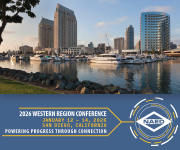By Stan Walerczyk
‘Features and Benefits’ can be a very useful phrase regarding smart lighting systems. Features are all that it can do, which are usually included in marketing and sales messages. Benefits are what the end-customer will probably realistically use.
For example, I use Microsoft Excel a lot, but only use a fraction of what it can do. Even if I learned more about Excel, I probably would not use that much of what it can do.
It can be very helpful if distributors and contractors determine how many benefits specific end-customers will really use, the value of those benefits to the end-customers and what the end-customers are willing to spend.
There are end-customers, including energy gurus of large companies, who want to know exact consumed wattage at any given time in various rooms and buildings, specific lighting fixtures that are turned on and off, dimming levels, hours that light sources, ballasts and drivers have been on, fixtures not working properly, etc. They are probably very interested in smart lighting systems.
There are other end-customers, who just want a low electric bill and do not have the time, interest or aptitude for the myriad of features. They probably do not care about smart lighting systems, and they probably do not want to spend the money for them.
Let’s look at a hibay example that has almost 50% time of occupancy and has no daylight. There are 100W LED hibays, which can replace 400W MH & HPS, 6F32T8 and 4F54T5 hibays. Even if each one is fully on 5000 hours a year at $.10/KWH, each one only burns $50 of electricity per year for a 600 square foot space, which is only $0.08 per square foot per year. Many end-customers may feel that parts and labor for basic motion sensors may not be cost effective. But a basic motion sensor may cut on time in half, which is $25 electrical cost per year. An advanced control system will probably not be able to further reduce that much electrical usage, but will probably cost a significant amount.
In one to three years, 75 – 80W LED hibays may be used in this application, which will make it even harder for any controls to be cost effective to save energy.
One good thing that advanced controls can do in some hibay applications is to turn on hibays that motion sensors on those hibays will not reach. Some warehouses have fork lift drivers, who really want to be NASCAR drivers, and truck drivers, who also drive faster than motion sensors on each hibay to turn on those hibays to be safe. So advance controls can turn on hibays further in front of these drivers.
Self-commissioning can be very helpful, and even some basic motion sensors can automatically adjust delay time if they are turning off too frequently.
The following tools may be helpful for distributors, contractors and end-customers regarding smart lighting systems.
- What is the total cost including parts in each fixture, communication devices per area, computer, software licensing fee, labor, commissioning and service contract?
- Some sales people may not bring up some of the pieces of the package until near the end of the sales process, because costs can be high
- Are most of the savings coming from the lighting side or the controls side of the system?
- Will the supplier be open to separate savings?
- Is the control system open protocol or proprietary?
- Open protocol is preferred, because if company goes out of business other open protocol companies can probably step in
- If an end-customer goes with a proprietary system, that end-customer is locked in to what that company wants to charge for parts and labor down the road
- Commissioning
- Who is responsible and what is the scope?
- Just checking if individual components work is not sufficient.
- Entire system needs to work optimally
- How long is warranty and what does it cover?
- Several smart lighting companies require or highly recommend a multi-year service contract, which can be on the expensive side
My email is stan@lightingwizards.com, and I look forward to your comments on existing columns and ideas for future columns.
Tagged with Exclusive Feature, lighting, tED




